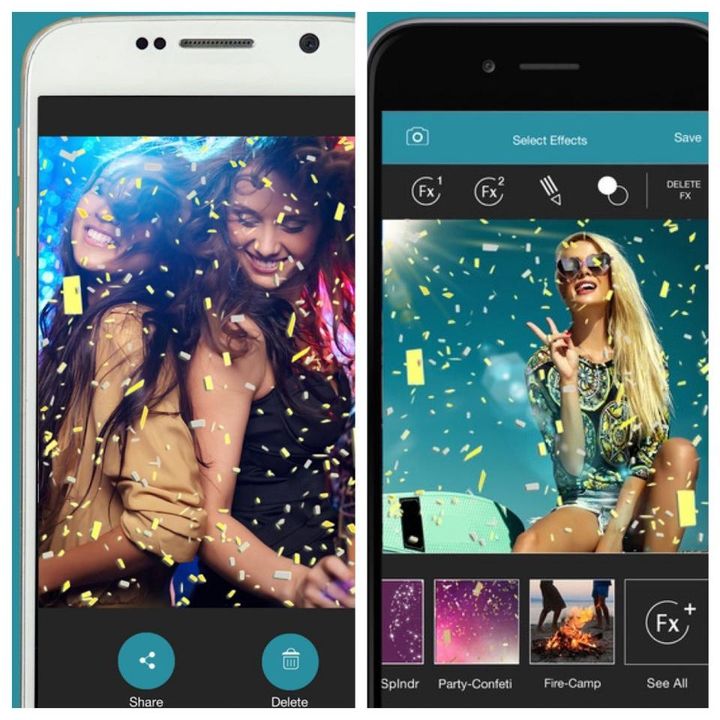One year ago this week, serial entrepreneur Diego Mortillaro launched Lumyer, a free mobile photo enhancement app. He knew the product was good, and the category he targeted one of the most popular, but no one can know if their app will really go viral without a marketing budget to kick it down the hill. Lumyer enhances photos and videos with animated filters and other photo enhancement features (think of it as Snapchat Filters on steroids), so the bet was the “Lumys” would be shared on social media and market themselves. It paid off: in December, Google Play named Lumyer one of its “Global Best”. The app has been downloaded 14 MM times, has three million monthly unique visitors and, perhaps most astonishingly, 5% of their users are paying for premium content. The company will soon launch a subscription service for users who want unlimited access to all the premium filters for one monthly fee. Small businesses all over the world are building Lumys to promote their products and services.

Lumyer is a photo and video enhancement app that allows users to augment reality by adding video and audio effects to both selfies or videos. Lumyer’s success landed it on the #2 spot on Google Play’s “Top Trending Apps of 2016,” announced in December.
The team has an impressive mobile pedigree. Mortillaro, 47, is a three-time entrepreneur in the mobile space. Besides Lumyer, he developed two other companies: UMG, an e commerce platform for cellular network operators, and OneBip, which is a mobile payment solution. Co-founders Francesco Scrufari, CTO and Simone Offredo, CPO, are based in Italy, where engineering costs are 25% of what they are in the Bay Area where Mortillaro is based. Prior to Lumyer, they were co-founders of Ulixe in 2001 and Visionborne, Inc. in 2012. Rounding out the founding team is Raffaele Rinaldi also a Visionborne, Inc. alumni, who is based in Los Angeles.

Digeo Mortillaro, Co-Founder and CEO of Lumyer.
The success of Lumyer is even more extraordinary considering their team of 9 is tiny, distributed in three cities, and they’ve raised around a million dollars in convertible notes, which in the start up world is very lean. Their programming team is in Italy, where costs are 30% of the Bay Area. Lumyer is now within striking distance of breaking even, and are preparing to raise a more robust Series A round of financing to expand. Mortillaro says Lumyer is going to spend most of the money on product and content development. “Content is the priority,” he said in an interview last Friday, “making a Lumy is an entertainment experience and people want to share the fun with their friends,. As a result, millions of people are making Lumys every month.” Lumyer currently offers 150 special effects, which can be layered on top of each other. 20% of Lumyer’s content requires an additional fee.
Alireza Masrour is the Managing Director early stage VC, Plug and Play, which was one of Lumyer’s earliest investors, “Since users will not download every single app, our first question was the amount of TIME that it took for them to obtain their first million users. In Lumyer’s case it was a short 8 months, a very impressive achievement. Following that, we wanted the company to obtain 10 million users based on their history of growth. They went on to surpass our expectations in a short window and now their speed of growth in the current app market has provably demonstrated that users enjoy the solution.”
The company describes their app as “Augmented Reality” and in a way, it is, since it maps digital content onto the real world, just like Snapchat and Pokemon Go (see my recent post How Snapchat Became the Leader in AR Without Really Trying). The introduction of 3D smart phones later this year will doubtless enhance the experience, but it’s AR lite, not to be confused with the kind of AR delivered by devices like the Microsoft Hololens or the Osterhout Design Group’s R8, which is a wearable Andriod phone (see my post The Next Mobile Computing Platform: A Pair of Sunglasses).
“I believe apps like Lumyer will do a good job fulfilling that need, and that VR/AR Gears will be a new phenomenon for media startups”, said Masrour. “The same way companies once received their users from Facebook or app stores in the early days, apps now have the opportunity to receive new users from cutting-edge media environments like VR/AR”.
Mortillaro says Lumyer has a huge e commerce opportunity beyond premium content. They recently made custom animated filters for the Universal animated movie, “Sing”, a huge coup for such a new company. “There is an even bigger opportunity in fashion, cosmetics, and design, Using AR filters, we will enable people to try on clothing, make up and jewelry where ever they are”.
